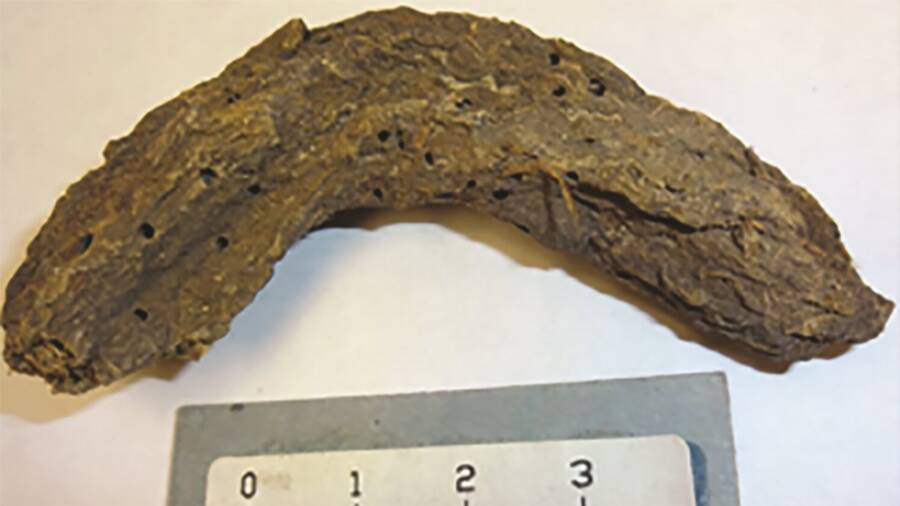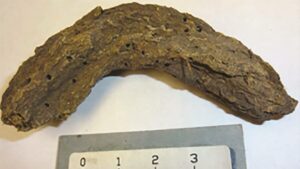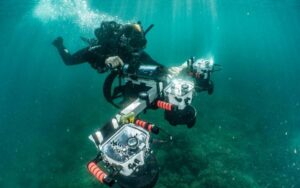“Ancient Iguanas: How a 5,000-Mile Pacific Journey Unlocked the Secrets of Prehistoric Survival”
How did iguanas pull off a 5,000-mile ocean voyage? We’re not talking about seasoned sailors here – instead, imagine these scaly creatures hitching a ride on floating vegetation, embarking on a hairy adventure from North America to the idyllic shores of Fiji, over 30 million years ago! A new study dives into this captivating theory, suggesting that these reptiles possibly “rafted” their way across the vast Pacific, not unlike how early humans navigated uncharted waters. Could it be true? Did our green, herbivorous friends really make such a monumental trip? This wild hypothesis is not just speculation; researchers say they have the evidence to back it all up. So grab your snorkeling gear – or your thinking cap; let’s explore the intriguing journey of Fiji’s iguanas! LEARN MORE
The study theorizes that Fiji’s iguanas made their way across 5,000 miles of ocean from North America atop “rafts” made from vegetation or uprooted trees.

Nicholas HessCrested iguanas (Brachylophus vitiensis) like this one are closely related to North American desert iguanas.
Fiji’s iguanas have long been a mystery. How did the reptiles make it to an island more than 1,000 nautical miles from land? A new study has postulated that iguanas got there like early humans did: by watercraft.
More specifically, the study suggests that the iguanas “rafted” from North America to Fiji on clumps of vegetation some 30 to 34 million years ago, a journey that would have taken the reptiles across 5,000 miles of open sea.
Though it may seem outlandish, the study’s authors believe that rafting is the only way that iguanas could have gotten to Fiji. And they say they have the evidence to back it up.
The Theory That Iguanas ‘Rafted’ From North America To Fiji
The study into Fiji’s iguanas, recently published in the Proceedings of the National Academy of Sciences, started with a question: Just how did Fiji’s four species of iguanas get to the island nation in the first place?
Fijian iguanas are the only iguanas that aren’t native to the Western Hemisphere, so the study authors’ first step was looking into their DNA. They found that the iguanas on Fiji, which belong to the genus Brachylophus, are closely related to the desert iguanas of the American Southwest and northwestern Mexico, which belong to the genus Dipsosaurus.
“Our analyses of genetic data, divergence dating, and biogeographic models found that Fijian iguanas are most closely related to North American desert iguanas,” lead author Simon Scarpetta, an assistant professor of Environmental Science at the University of San Francisco who began the study as a National Science Foundation postdoctoral fellowship at the University of California, Berkeley, explained to All That’s Interesting in an email.
What’s more, Scarpetta and his team found that “the divergence between the two groups is between 31 and 34 million years ago.” In other words, something happened then for Brachylophus to branch off from Dipsosaurus.

USGSA Central Fijian banded iguana, Brachylophus bulabula.
This was important, as the Fijian archipelago was formed some 34 million years ago by volcanic activity. Iguanas floating around in the ocean on loose vegetation would have had somewhere to land.
Iguanas have been observed “rafting” before, notably around the Caribbean. And researchers also suspect that rafting facilitated iguanas’ migration from Central America to the Galapagos Islands long ago. Scarpetta and his co-authors thus suggest that something similar happened in Fiji when North American iguanas rafted 5,000 miles to the island.
But 5,000 miles is a long way for a lizard to travel. So, Scarpetta and his team also had to argue why iguana rafting is more likely than any other possibility.
The Evidence Of Iguanas Rafting To Fiji
There are other theories about how iguanas got to Fiji. One is that the island’s iguanas are perhaps a member of an extinct group. Another suggests that the iguanas first crossed over land from the Americas to Asia or Australia and thus endured a much shorter crossing to Fiji.

Simon Scarpetta and Jim McGuireA map showing the various ways that iguanas may have made their way to Fiji millions of years ago.
As to the first point, Scarpetta and his team were able to determine that the Fiji iguanas are related to North American iguanas, not to an unknown species. To the second, the split in their genus some 30 million years ago came at a time when much of the Earth was cold and icy. This suggests that the heat-loving iguanas could not have survived a voyage through Asia or Australia at the time that they made their way to Fiji.
“[T]here [also] is no fossil evidence that iguanas ever inhabited anywhere in the Eastern Hemisphere besides Fiji and Tonga,” Scarpetta explained to All That’s Interesting. “On the other hand, there are several fossils of the desert iguana lineage and at least one other early iguana in North America.”
As such, rafting seems like the most likely possibility. And the study authors are convinced that the iguanas would have survived such a journey.



















